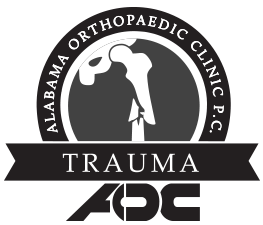News & Events
Stress Fractures In Athletes
With the increase in participation in recreational and competitive sports, the incidence of overuse injuries has risen substantially. One such overuse injury is a stress fracture. A stress fracture is a break in a bone as a result of repetitive force that exceeds the bone’s ability to repair itself. The break may be partial or complete and can have varying symptoms. Prompt diagnosis and proper treatment is imperative in order to minimize loss of playing time and prevent irreversible damage to certain joints.
Stress fractures have been documented in almost every sport and can account for up to 10% of sports injuries. The incidence in U.S. military recruits has been reported in up to 4% of males and 7% of females. Three categories of risk factors for stress fractures include extrinsic loading, bone strength, and bone physiology. Extrinsic loading includes factors such as training schedule, footwear, and skeletal alignment. Up to 86% of athletes with stress fractures report changes in their training schedule- most often sudden increases. Muscle fatigue can result in decreased ability to absorb ground reaction force, and excessive foot pronation and passive hip rotation may increase tibial stress fractures.
Bone strength is important in preventing these overuse fractures. Bone density is measures in grams per cubic centimeter (g/cm3). Bone strength is related to its square of the apparent density. Therefore, a bone with relatively low density can fracture with less applied stress than a bone of higher density. Bone physiology and overall bone health is important to preventing stress fractures. Smoking and eating disorders such as anorexia nervosa and bulimia can place athletes, particularly females at risk for stress fractures. The diagnosis of a stress fracture like all sports injuries requires a careful history and physical examination, followed by appropriate diagnostic studies. Early symptoms reported often include vague pain that occurs with exercise but lessens with rest. As the injury continues, pain occurs earlier in the training period and takes longer to decrease. With advanced injuries swelling, tenderness, and loss of training endurance occurs. Radiographs (X-rays) are the usual first diagnostic study to be undertaken. They are usually not helpful until a healing response is seen. Sensitivity of X-ray examination may be as low as 15% in the early stages of the injury. However, a bone scan, performed using radioactive technetium is highly sensitive to detecting stress fractures. The technetium 99 isotope localizes itself in areas of high bone metabolism. Besides low dose radiation exposure, bone scans can be ‘positive’ in other conditions such as tumors or infection, and therefore a MRI is becoming the study of choice for detecting stress fractures. MRI scans are sensitive to detecting fractures and show highly detailed pictures including the surrounding soft tissue response to the injury.
The treatment of a stress fracture depends on its location and severity. Sites at low risk for complications are initially treated with reduction in activity (relative rest), over-the-counter pain medications, and correction of any modifiable factors such as training schedule or eating disorders. The reduction, but not elimination of impact loading allows the bone to catch up and repair itself. A slow return to exercise is allowed as healing and symptoms improve.
High risks sites such as the proximal fifth metatarsal (Jones fracture), femoral neck, anterior tibial cortex, and the navicular bone of the foot require special attention and may require surgery. Femoral neck stress fractures can cause severe complications if not treated properly. Many of these will require urgent surgery to prevent damage to the blood supply of the hip joint. Stress fractures of the fifth metatarsal in high demand athletes such may require internal fixation to improve healing and reduce loss of playing time. This metatarsal stress fracture is similar to the injury sustained by Ole Miss defensive end Greg Hardy.
As athletic competition has increased, stress fractures have become more common. As research into stress fractures increases, it is hoped that prevention of these potentially costly injuries will increase also. Prompt diagnosis and proper treatment can reduce loss of playing time and improve the quality of life of athletes of all ages.
- < Back
- |

























